NTC Pedagogy For Primary And JHS Questions And Answers (Lesson Planning And Inclusion Learning )
Lesson Planning And Inclusion Learning
Lesson Planning Questions And Answer From The Content Area Of The NTC BOOK
NTC Pedagogy For Primary And JHS Questions And Answers (Lesson Planning)
NTC Pedagogy For Primary And JHS Questions And Answers (Inclusion Learning)
NTC Pedagogy For Primary And JHS Questions And Answers (Differentiated And Scaffolding)
NTC Pedagogy For Primary And JHS Questions And Answers (Curriculum)
NTC Pedagogy For Primary And JHS Questions And Answers (Methods Of Teaching Primary And JHS) 1
NTC Pedagogy For Primary And JHS Questions And Answers (Methods Of Teaching Primary And JHS) 2
JOIN OUR WHATSAPP PAGE HERE
Please kindly take your time and read it well. These questions and answers are based on the content of the syllabus provided by the National Teaching Council.
Do not forget that without NTC certificate you will not post as a train teacher.
So, let’s take our time and read the questions and answers well please
Here are all the related questions and answers from Lesson Planning
NOTE ALL ANSWERS ARE BOLD
- Which of the following is not a component of a lesson plan?
a) Learning objectives
b) Lesson duration
c) Teacher’s favorite book
d) Instructional strategies
2. What does the “Materials/Resources” component of a lesson plan include?
a) Prior knowledge assessment
b) Assessment tools
c) Required materials and technology
d) Differentiation techniques
3. What is the purpose of including measurable objectives in a lesson plan?
a) To ensure students have fun during the lesson
b) To guide the instructional strategies
c) To allow for effective assessment and evaluation
d) To make the lesson plan longer
4. Which component of a lesson plan outlines the specific teaching methods?
a) Lesson title
b) Instructional strategies
c) Closure/Summary
d) Differentiation
5. What should be included in the “Closure/Summary” component of a lesson plan?
a) Introduction to the lesson
b) A recap of the main concepts covered
c) A list of materials and resources
d) Reflection on the lesson’s effectiveness
6. Which component of a lesson plan describes the step-by-step breakdown of activities?
a) Prerequisite knowledge
b) Lesson procedure/sequence
c) Time duration
d) Extension/enrichment
7. What is the purpose of including differentiation in a lesson plan?
a) To ensure all students have the same experience
b) To provide opportunities for extension activities
c) To cater to the diverse learning needs of students
d) To assess students’ understanding
8. What does the “Assessment/Evaluation” component of a lesson plan involve?
a) Reflection on the lesson’s effectiveness
b) Identification of prerequisite knowledge
c) Strategies and tools to assess students’ learning
d) Instructional strategies for teaching
NTC Pedagogy For Primary And JHS Questions And Answers (Lesson Planning)
NTC Pedagogy For Primary And JHS Questions And Answers (Inclusion Learning)
NTC Pedagogy For Primary And JHS Questions And Answers (Differentiated And Scaffolding)
NTC Pedagogy For Primary And JHS Questions And Answers (Curriculum)
NTC Pedagogy For Primary And JHS Questions And Answers (Methods Of Teaching Primary And JHS) 1
NTC Pedagogy For Primary And JHS Questions And Answers (Methods Of Teaching Primary And JHS) 2
JOIN OUR WHATSAPP PAGE HERE
9. Which component of a lesson plan focuses on the time needed for each activity?
a) Differentiation
b) Lesson overview/objective
c) Closure/Summary
d) Time duration
10. What is the purpose of the “Extension/Enrichment” component in a lesson plan?
a) To provide additional support for struggling students
b) To engage students in hands-on activities
c) To offer optional activities for advanced learners
d) To assess students’ understanding
11. Which component of a lesson plan includes the main learning goals?
a) Extension/Enrichment
b) Lesson title
c) Differentiation
d) Lesson overview/objective
12. What is the purpose of the “Reflection” component in a lesson plan?
a) To summarize the key concepts covered
b) To provide additional resources for students
c) To assess students’ learning progress
d) To evaluate the effectiveness of the lesson
13. Which component of a lesson plan describes the specific learning goal(s)?
a) Reflection
b) Materials/Resources
c) Lesson procedure/sequence
d) Lesson overview/objective
14. What should be included in the “Prerequisite Knowledge” component of a lesson plan?
a) The specific teaching methods to be used
b) Materials and resources needed for the lesson
c) A summary of the main concepts covered
d) Any prior knowledge or skills required
15. What does the “Instructional Strategies” component of a lesson plan involve?
a) Describing the main learning goals
b) Identifying prerequisite knowledge
c) Outlining the specific teaching methods
d) Providing additional resources for students
16. What is the purpose of including a specific time duration in a lesson plan?
a) To ensure students have enough time for breaks
b) To provide opportunities for extension activities
c) To allow for effective time management
d) To make the lesson plan more organized
17. Which component of a lesson plan describes the step-by-step breakdown of activities?
a) Closure/Summary
b) Prerequisite knowledge
c) Lesson procedure/sequence
d) Differentiation
NTC Pedagogy For Primary And JHS Questions And Answers (Lesson Planning)
NTC Pedagogy For Primary And JHS Questions And Answers (Inclusion Learning)
NTC Pedagogy For Primary And JHS Questions And Answers (Differentiated And Scaffolding)
NTC Pedagogy For Primary And JHS Questions And Answers (Curriculum)
NTC Pedagogy For Primary And JHS Questions And Answers (Methods Of Teaching Primary And JHS) 1
NTC Pedagogy For Primary And JHS Questions And Answers (Methods Of Teaching Primary And JHS) 2
JOIN OUR WHATSAPP PAGE HERE
18.. What should be included in the “Lesson Procedure/Sequence” component of a lesson plan?
a) Differentiation techniques
b) A step-by-step breakdown of activities
c) The main learning goals
d) Strategies for effective time management
19. What is the purpose of including a closure/summary in a lesson plan?
a) To ensure students have fun during the lesson
b) To provide extension activities for advanced learners
c) To check for student understanding and recap key concepts
d) To assess students’ learning progress
20. Which component of a lesson plan describes the strategies and tools for assessment?
a) Extension/Enrichment
b) Differentiation
c) Assessment/Evaluation
d) Prerequisite knowledge
21. What is the main purpose of preparing a lesson plan?
a) To keep students busy
b) To guide and structure instruction
c) To impress the school administration
d) To make teaching easier
Answer: b) To guide and structure instruction
22. Which of the following is a benefit of a well-designed lesson plan?
a) Increased student absenteeism
b) Decreased student engagement
c) Improved time management
d) Limited differentiation options
Answer: c) Improved time management
23. What does a lesson plan help teachers clarify?
a) Students’ lunch preferences
b) Learning objectives and outcomes
c) Classroom decoration ideas
d) Teachers’ favorite hobbies
Answer: b) Learning objectives and outcomes
24. Why is differentiation important in lesson planning?
a) It allows teachers to ignore students’ diverse needs
b) It helps teachers reduce instructional time
c) It ensures that all students are challenged appropriately
d) It makes teaching more monotonous
Answer: c) It ensures that all students are challenged appropriately
25. Which type of lesson plan focuses on student-led exploration and investigation?
a) Detailed lesson plan
b) Conceptual lesson plan
c) Inquiry-based lesson plan
d) Project-based lesson plan
Answer: c) Inquiry-based lesson plan
26. What is the benefit of aligning instruction with assessment in a lesson plan?
a) It eliminates the need for assessments
b) It helps teachers collect irrelevant data
c) It provides opportunities for evaluation and adjustment
d) It limits student participation in the learning process
Answer: c) It provides opportunities for evaluation and adjustment
27. Which type of lesson plan emphasizes understanding and connections between different topics?
a) Detailed lesson plan
b) Conceptual lesson plan
c) Inquiry-based lesson plan
d) Project-based lesson plan
Answer: b) Conceptual lesson plan
NTC Pedagogy For Primary And JHS Questions And Answers (Lesson Planning)
NTC Pedagogy For Primary And JHS Questions And Answers (Inclusion Learning)
NTC Pedagogy For Primary And JHS Questions And Answers (Differentiated And Scaffolding)
NTC Pedagogy For Primary And JHS Questions And Answers (Curriculum)
NTC Pedagogy For Primary And JHS Questions And Answers (Methods Of Teaching Primary And JHS) 1
NTC Pedagogy For Primary And JHS Questions And Answers (Methods Of Teaching Primary And JHS) 2
JOIN OUR WHATSAPP PAGE HERE
28. What does a well-prepared lesson plan enable teachers to do?
a) Be unprepared for class
b) Focus on their favorite TV shows
c) Reflect on their teaching practices
d) Avoid interacting with students
Answer: c) Reflect on their teaching practices
29. Which of the following is a disadvantage of not preparing a lesson plan?
a) Enhanced student achievement
b) Clear learning objectives
c) Unstructured and ineffective instruction
d) Increased student engagement
Answer: c) Unstructured and ineffective instruction
30. Which type of lesson plan accommodates students’ diverse needs and learning styles?
a) Detailed lesson plan
b) Conceptual lesson plan
c) Inquiry-based lesson plan
d) Differentiated lesson plan
Answer: d) Differentiated lesson plan
31. How can a lesson plan help with resource preparation?
a) By eliminating the need for resources
b) By ensuring all necessary materials are available
c) By increasing the cost of instruction
d) By limiting access to technology
Answer: b) By ensuring all necessary materials are available
32. Which type of lesson plan focuses on extended, in-depth projects?
a) Detailed lesson plan
b) Conceptual lesson plan
c) Inquiry-based lesson plan
d) Project-based lesson plan
Answer: d) Project-based lesson plan
NTC Pedagogy For Primary And JHS Questions And Answers (Lesson Planning)
NTC Pedagogy For Primary And JHS Questions And Answers (Inclusion Learning)
NTC Pedagogy For Primary And JHS Questions And Answers (Differentiated And Scaffolding)
NTC Pedagogy For Primary And JHS Questions And Answers (Curriculum)
NTC Pedagogy For Primary And JHS Questions And Answers (Methods Of Teaching Primary And JHS) 1
NTC Pedagogy For Primary And JHS Questions And Answers (Methods Of Teaching Primary And JHS) 2
JOIN OUR WHATSAPP PAGE HERE
33. Why is a lesson plan considered a tool for professional growth?
a) It allows teachers to avoid professional development opportunities
b) It provides opportunities for collaboration with colleagues
c) It restricts teachers’ creativity and innovation
d) It discourages reflection and self-improvement
Answer: b) It provides opportunities for collaboration with colleagues
34. What is the primary purpose of a detailed lesson plan?
a) To confuse students with unnecessary details
b) To impress the school principal
c) To provide a step-by-step guide for instruction
d) To allow students to teach themselves
Answer: c) To provide a step-by-step guide for instruction
35. Which type of lesson plan promotes student-led questioning and investigation?
a) Detailed lesson plan
b) Conceptual lesson plan
c) Inquiry-based lesson plan
d) Project-based lesson plan
Answer: c) Inquiry-based lesson plan
36. What does a lesson plan help teachers avoid during instruction?
a) Student engagement
b) Classroom management
c) Differentiation strategies
d) Assessment alignment
Answer: b) Classroom management
37. How does a lesson plan facilitate differentiation?
a) By providing standardized instruction for all students
b) By excluding students with special needs
c) By allowing teachers to adapt instruction to individual needs
d) By limiting students’ opportunities for exploration
Answer: c) By allowing teachers to adapt instruction to individual needs
38. Why is time management important in a lesson plan?
a) To prolong instructional time
b) To limit student participation
c) To ensure all necessary content is covered
d) To reduce student achievement
Answer: c) To ensure all necessary content is covered
NTC Pedagogy For Primary And JHS Questions And Answers (Lesson Planning)
NTC Pedagogy For Primary And JHS Questions And Answers (Inclusion Learning)
NTC Pedagogy For Primary And JHS Questions And Answers (Differentiated And Scaffolding)
NTC Pedagogy For Primary And JHS Questions And Answers (Curriculum)
NTC Pedagogy For Primary And JHS Questions And Answers (Methods Of Teaching Primary And JHS) 1
NTC Pedagogy For Primary And JHS Questions And Answers (Methods Of Teaching Primary And JHS) 2
JOIN OUR WHATSAPP PAGE HERE
39. Which type of lesson plan focuses on teaching overarching concepts or big ideas?
a) Detailed lesson plan
b) Conceptual lesson plan
c) Inquiry-based lesson plan
d) Differentiated lesson plan
Answer: b) Conceptual lesson plan
40. What does a lesson plan provide for teachers?
a) Extra vacation days
b) Increased workload
c) A structured framework for instruction
d) Limited creativity and flexibility
Answer: c) A structured framework for instruction
Inclusion Learning Questions And Answer From The Content Area Of The NTC BOOK
- Question: What is the primary goal of inclusion learning?
a) Creating a competitive environment
b) Providing equal opportunities for all students
c) Segregating students based on their abilities
d) Implementing standardized assessments
Answer: b) Providing equal opportunities for all students
2. Question: Which term refers to the practice of creating environments where individuals of all backgrounds feel valued and supported?
a) Inclusion learning
b) Differentiated instruction
c) Collaborative learning
d) Cultural sensitivity
Answer: a) Inclusion learning
3. Question: What is one strategy for managing an inclusive classroom?
a) Segregating students based on their abilities
b) Promoting empathy and understanding
c) Fostering competition among students
d) Providing identical learning materials for all students
Answer: b) Promoting empathy and understanding
NTC Pedagogy For Primary And JHS Questions And Answers (Lesson Planning)
NTC Pedagogy For Primary And JHS Questions And Answers (Inclusion Learning)
NTC Pedagogy For Primary And JHS Questions And Answers (Differentiated And Scaffolding)
NTC Pedagogy For Primary And JHS Questions And Answers (Curriculum)
NTC Pedagogy For Primary And JHS Questions And Answers (Methods Of Teaching Primary And JHS) 1
NTC Pedagogy For Primary And JHS Questions And Answers (Methods Of Teaching Primary And JHS) 2
JOIN OUR WHATSAPP PAGE HERE
4. Question: What is the significance of differentiated instruction in an inclusive classroom?
a) It encourages competition among students.
b) It provides equal opportunities for all students.
c) It focuses on a one-size-fits-all teaching approach.
d) It disregards the diverse needs of students.
Answer: b) It provides equal opportunities for all students.
5. Question: What is one challenge of inclusive practices in the classroom?
a) Lack of teacher training and support
b) Segregation of students based on abilities
c) Implementation of standardized assessments
d) Discouraging collaboration among students
Answer: a) Lack of teacher training and support
6. Question: Which approach emphasizes celebrating and valuing the contributions of all students?
a) Differentiated instruction
b) Collaborative learning
c) Universal Design for Learning (UDL)
d) Cultivating an inclusive classroom culture
Answer: d) Cultivating an inclusive classroom culture
7. Question: What is one strategy to address attitudinal barriers in an inclusive classroom?
a) Promoting empathy and understanding
b) Segregating students based on their abilities
c) Implementing identical instructional materials for all students
d) Avoiding discussions about diversity
Answer: a) Promoting empathy and understanding
8. Question: Which term refers to adapting instructional materials and methods to meet individual student needs?
a) Universal Design for Learning (UDL)
b) Differentiated instruction
c) Collaborative learning
d) Individualized support
Answer: b) Differentiated instruction
9. Question: What is the purpose of collaborative learning in an inclusive classroom?
a) Segregating students based on their abilities
b) Fostering competition among students
c) Encouraging teamwork and positive peer interactions
d) Implementing standardized assessments
Answer: c) Encouraging teamwork and positive peer interactions
10. Question: What does UDL stand for in the context of inclusive practices?
a) Unified Differentiation and Learning
b) Universal Design for Learning
c) Unified Diversity and Learning
d) Unique Differentiation and Learning
Answer: b) Universal Design for Learning
11. Question: What is one strategy to promote family and community engagement in an inclusive classroom?
a) Segregating students based on their abilities
b) Excluding families from decision-making processes
c) Fostering open communication and collaboration with families
d) Limiting resources and support staff
Answer: c) Fostering open communication and collaboration with families
NTC Pedagogy For Primary And JHS Questions And Answers (Lesson Planning)
NTC Pedagogy For Primary And JHS Questions And Answers (Inclusion Learning)
NTC Pedagogy For Primary And JHS Questions And Answers (Differentiated And Scaffolding)
NTC Pedagogy For Primary And JHS Questions And Answers (Curriculum)
NTC Pedagogy For Primary And JHS Questions And Answers (Methods Of Teaching Primary And JHS) 1
NTC Pedagogy For Primary And JHS Questions And Answers (Methods Of Teaching Primary And JHS) 2
JOIN OUR WHATSAPP PAGE HERE
12. Question: What is the meaning of inclusion learning?
a) Providing equal opportunities for all students
b) Promoting competition among students
c) Segregating students based on their abilities
d) Discouraging diverse perspectives and experiences
Answer: a) Providing equal opportunities for all students
13. Question: What is one benefit of an inclusive classroom culture?
a) Segregation of students based on their abilities
b) Fostering open communication among students
c) Promoting stereotypes and biases
d) Discouraging empathy and understanding
Answer: b) Fostering open communication among students
14. What does inclusive learning aim to provide?
a) Equal opportunities for all students
b) Exclusive opportunities for specific students
c) Separate opportunities for different student groups
d) Limited opportunities for certain abilities
15. What is the primary goal of inclusion learning?
a) Eliminating barriers to education
b) Isolating certain student groups
c) Promoting competition among students
d) Excluding students with disabilities
16. Which of the following is a challenge in implementing inclusive practices?
a) Lack of diversity in the classroom
b) Excessive resources and support staff
c) Attitudinal barriers and biases
d) Standardized curriculum and assessments
17. What does differentiated instruction in an inclusive classroom involve?
a) Providing the same instructions to all students
b) Modifying teaching methods for individual needs
c) Ignoring students’ learning styles and abilities
d) Focusing solely on students with disabilities
18. What is a key strategy for managing an inclusive classroom?
a) Implementing strict disciplinary measures
b) Promoting collaboration among students
c) Excluding students with disabilities
d) Offering limited support and accommodations
NTC Pedagogy For Primary And JHS Questions And Answers (Lesson Planning)
NTC Pedagogy For Primary And JHS Questions And Answers (Inclusion Learning)
NTC Pedagogy For Primary And JHS Questions And Answers (Differentiated And Scaffolding)
NTC Pedagogy For Primary And JHS Questions And Answers (Curriculum)
NTC Pedagogy For Primary And JHS Questions And Answers (Methods Of Teaching Primary And JHS) 1
NTC Pedagogy For Primary And JHS Questions And Answers (Methods Of Teaching Primary And JHS) 2
JOIN OUR WHATSAPP PAGE HERE
19. What is the purpose of celebrating and valuing the contributions of all students in an inclusive classroom?
a) To create a competitive environment
b) To promote empathy and understanding
c) To highlight differences and exclusion
d) To discourage student participation
20. Which approach involves addressing diverse learning styles, abilities, and needs in an inclusive classroom?
a) Universal Design for Learning (UDL)
b) Uniform Instructional Approach (UIA)
c) Segregated Learning Styles (SLS)
d) Exclusive Curriculum Differentiation (ECD)
21. What is an important element of collaborative learning in an inclusive classroom?
a) Encouraging positive peer interactions
b) Assigning individual projects only
c) Eliminating teamwork among students
d) Promoting competition and exclusion
22. How can teachers provide individualized support in an inclusive classroom?
a) Implementing standardized teaching methods
b) Assigning identical assignments to all students
c) Collaborating with support staff and professionals
d) Ignoring students’ specific learning needs
23. What is the goal of Universal Design for Learning (UDL) in an inclusive classroom?
a) Limiting access to educational resources
b) Adapting curriculum materials to specific abilities
c) Providing options for representation, engagement, and expression
d) Eliminating accommodations and support for students
24. What is a common challenge in implementing inclusive practices?
a) Lack of collaboration and communication
b) Excessive resources and support staff
c) Limited diversity in the classroom
d) Rigid and inflexible curriculum materials
25. How can teachers foster an inclusive classroom culture?
a) Establishing strict rules and punishments
b) Ignoring students’ diverse backgrounds
c) Promoting open communication and respect
d) Encouraging competition among students
NTC Pedagogy For Primary And JHS Questions And Answers (Lesson Planning)
NTC Pedagogy For Primary And JHS Questions And Answers (Inclusion Learning)
NTC Pedagogy For Primary And JHS Questions And Answers (Differentiated And Scaffolding)
NTC Pedagogy For Primary And JHS Questions And Answers (Curriculum)
NTC Pedagogy For Primary And JHS Questions And Answers (Methods Of Teaching Primary And JHS) 1
NTC Pedagogy For Primary And JHS Questions And Answers (Methods Of Teaching Primary And JHS) 2
JOIN OUR WHATSAPP PAGE HERE
26. What is the significance of ongoing professional development in implementing inclusive practices?
a) Limiting teachers’ growth and learning
b) Providing one-time training sessions only
c) Enhancing understanding and knowledge of inclusive practices
d) Excluding teachers from collaboration opportunities
27. What role do families play in an inclusive classroom?
a) Excluding families from the educational process
b) Collaborating with families for decision-making processes
c) Disregarding the input of families in students’ needs
d) Limiting communication and involvement with families
28. What is the meaning of inclusion learning?
a) Excluding certain students from educational opportunities
b) Focusing solely on academic achievement
c) Providing equal opportunities for all students to learn
d) Limiting access to educational resources for certain students
29. What is the primary goal of inclusion in education?
a) Promoting exclusivity and segregation
b) Providing limited opportunities for specific students
c) Ensuring equitable access and participation for all students
d) Encouraging competition and differentiation among students
30. What is a challenge in implementing inclusive practices in the classroom?
a) Lack of diversity among students
b) Limited resources and support staff
c) Exclusion of students with disabilities
d) Flexible curriculum and assessments
31. How can teachers differentiate instruction in an inclusive classroom?
a) Providing the same instruction to all students
b) Ignoring students’ individual learning needs
c) Adapting teaching methods and materials
d) Focusing solely on students with disabilities
32. What is a key strategy for managing an inclusive classroom?
a) Promoting collaboration among students
b) Implementing strict disciplinary measures
c) Excluding students with disabilities
d) Offering limited support and accommodations
NTC Pedagogy For Primary And JHS Questions And Answers (Lesson Planning)
NTC Pedagogy For Primary And JHS Questions And Answers (Inclusion Learning)
NTC Pedagogy For Primary And JHS Questions And Answers (Differentiated And Scaffolding)
NTC Pedagogy For Primary And JHS Questions And Answers (Curriculum)
NTC Pedagogy For Primary And JHS Questions And Answers (Methods Of Teaching Primary And JHS) 1
NTC Pedagogy For Primary And JHS Questions And Answers (Methods Of Teaching Primary And JHS) 2
JOIN OUR WHATSAPP PAGE HERE
33. What is the purpose of celebrating the contributions of all students in an inclusive classroom?
a) To create a competitive environment
b) To promote empathy and understanding
c) To highlight differences and exclusion
d) To discourage student participation
TRUE OR FALSE QUESTIONS AND ANSWERS
34. True or False: Inclusive education practices promote equal opportunities for learning for all students.
Answer: True
35. True or False: Inclusive classrooms enhance social interaction and foster empathy among students.
Answer: True
36. True or False: Inclusive education is only important for students with disabilities.
Answer: False
37. True or False: Inclusive education helps prepare students for future interactions in diverse societies.
Answer: True
38. True or False: Inclusive education practices are not legally or ethically imperative.
Answer: False
Fill-in Questions: QUESTION AND ANSWERS
39. Inclusive education practices aim to accommodate the __________ needs and abilities of all students.
Answer: diverse
40. In an inclusive classroom, students learn to appreciate and respect __________.
Answer: differences
41. Inclusive education fosters a positive classroom culture based on __________ and teamwork.
Answer: collaboration
42. Inclusive education prepares students for success in a __________ and interconnected world.
Answer: globalized
4.3. Inclusive education promotes a sense of __________ and belonging among all students.
Answer: community
NTC Pedagogy For Primary And JHS Questions And Answers (Lesson Planning)
NTC Pedagogy For Primary And JHS Questions And Answers (Inclusion Learning)
NTC Pedagogy For Primary And JHS Questions And Answers (Differentiated And Scaffolding)
NTC Pedagogy For Primary And JHS Questions And Answers (Curriculum)
NTC Pedagogy For Primary And JHS Questions And Answers (Methods Of Teaching Primary And JHS) 1
NTC Pedagogy For Primary And JHS Questions And Answers (Methods Of Teaching Primary And JHS) 2
JOIN OUR WHATSAPP PAGE HERE

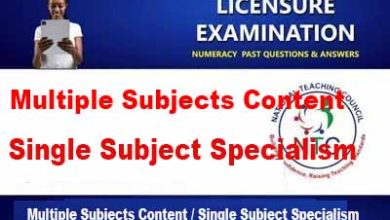
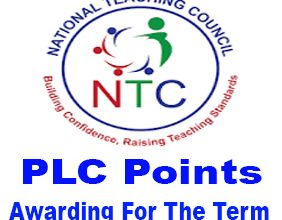

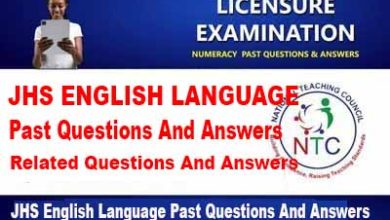
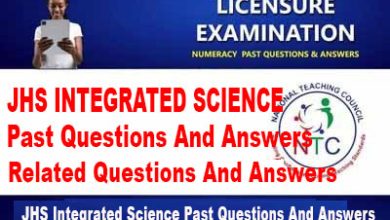
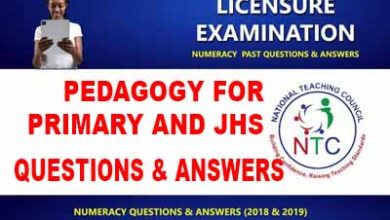
3 Comments